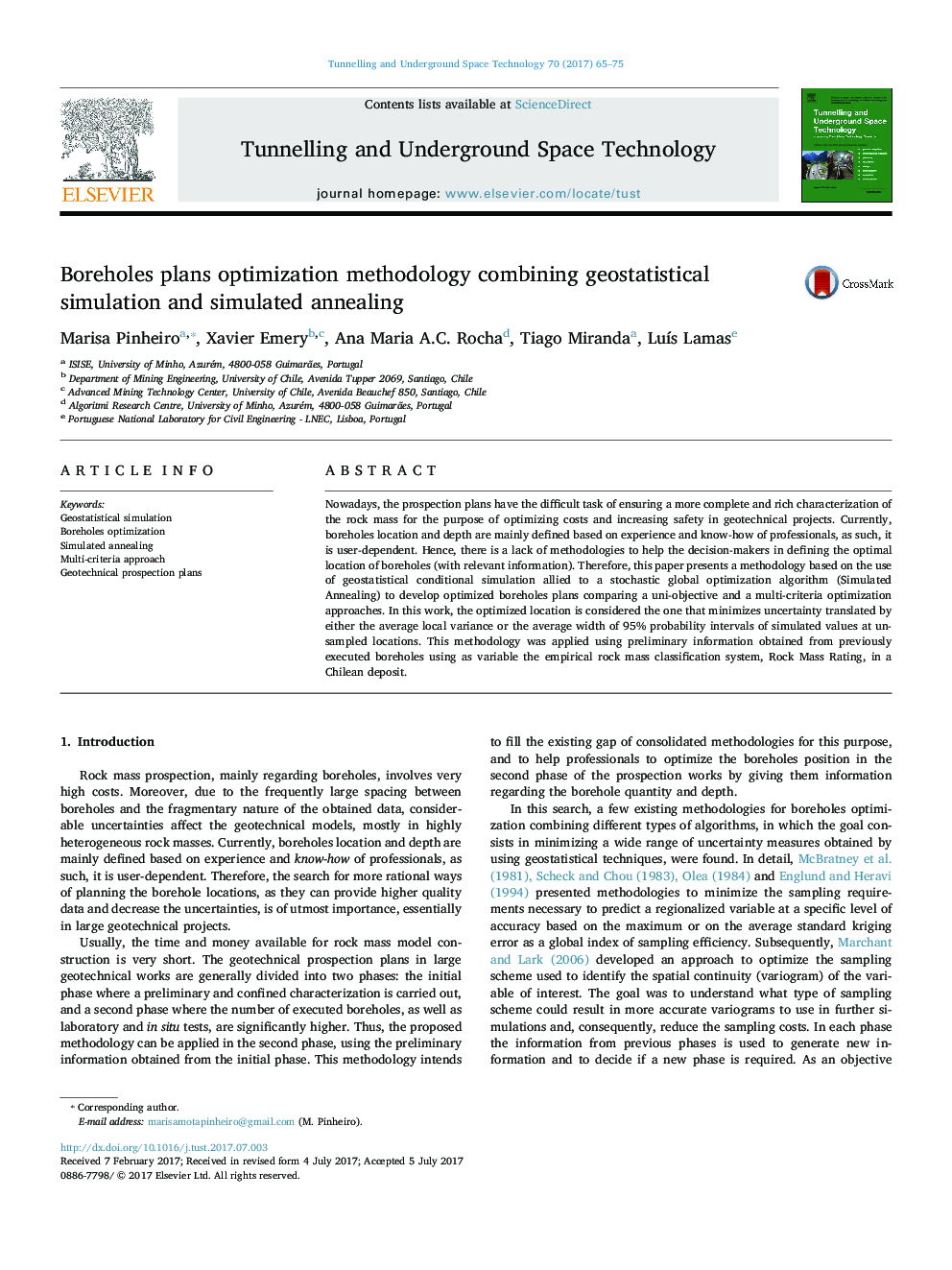| Article ID | Journal | Published Year | Pages | File Type |
|---|---|---|---|---|
| 4929221 | Tunnelling and Underground Space Technology | 2017 | 11 Pages |
Abstract
Nowadays, the prospection plans have the difficult task of ensuring a more complete and rich characterization of the rock mass for the purpose of optimizing costs and increasing safety in geotechnical projects. Currently, boreholes location and depth are mainly defined based on experience and know-how of professionals, as such, it is user-dependent. Hence, there is a lack of methodologies to help the decision-makers in defining the optimal location of boreholes (with relevant information). Therefore, this paper presents a methodology based on the use of geostatistical conditional simulation allied to a stochastic global optimization algorithm (Simulated Annealing) to develop optimized boreholes plans comparing a uni-objective and a multi-criteria optimization approaches. In this work, the optimized location is considered the one that minimizes uncertainty translated by either the average local variance or the average width of 95% probability intervals of simulated values at unsampled locations. This methodology was applied using preliminary information obtained from previously executed boreholes using as variable the empirical rock mass classification system, Rock Mass Rating, in a Chilean deposit.
Related Topics
Physical Sciences and Engineering
Earth and Planetary Sciences
Geotechnical Engineering and Engineering Geology
Authors
Marisa Pinheiro, Xavier Emery, Ana Maria A.C. Rocha, Tiago Miranda, LuÃs Lamas,
